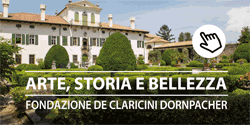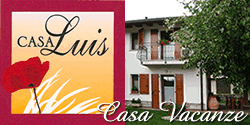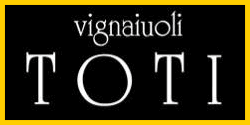Home / SORROUNDINGS /Natisone's Valley
Natisone's Valley
VISIT THE SITE ENTIRELY DEDICATED TO THE VALLEYS OF NATISONE:
Natisone's Valleys are connected to Cividale, ancient Forum Iulii, and Isonzo's valley and they are situated in the oriental part of Friuli-Venezia Giulia.
They are characterized by Natisone's valley properly said and of those covered by its affluents, Alberone, Cosizza and Erbezzo.
They are symbolized by Matajur Mount (1641 m.) that it dominates them and from its top it's possible to see the Adriatic.
It's possible to visit numerous small churches of the XV and the XVI century situated everywhere in the territory.
You can find them covering paths in woods and meadows.
Interestig are several natural caves, some inexplored, between which it's enunciates Saint John's Cave, very interesting under the naturalistic, historical, religious and cultural profile.
In the natural atmosphere of the area you can practice various sports like trakking, mountain bike, fishing and excursions.
Natisone's Valleys are an interesting area also under cultural profile.
In this territory, characterized by its particular geographic position, an atmosphere in which the relationship has been delivered up man - ambient it has created an historical - cultural patrimony of remarkable interest that extrinsic in traditions absolutely original that they go from the popular architecture until the traditional gastronomia.
LA SLAVIA FRIULANA, LA BENECIJA (from Wikipedia)
The Slavia friulana, also known as Italian Slavia or Slavia veneta (Sclavanie in Friulian, Benecija or Beneška Slovenija in Slovenian) is the denomination of the hilly and mountainous region (Prealpi Giulie) of eastern Friuli, which extends between Cividale del Friuli and the mountains above Caporetto (now in Slovenia). The Slavs settled in these areas already in the Lombard period, so much so that it was precisely the Lombard power to accommodate the first settlers and to impose the eastern border between Romance and Slavic population, almost coinciding with the natural boundary between the plain (Romance) and the mountainous territory of the pre-alps (Slavic). The Slavic presence probably strengthened after the Hungarian invasions in the ninth century, when the Patriarchate of Aquileia used groups of Slavic peasants of various origins (mainly Slovenes from Carinthia and Carniola) also to repopulate some areas of the Friulian plain devastated and almost desertified by the raids, and it is not excluded that it could have happened for the mountainous areas. However, the Slavic ethnic groups of the plains were soon assimilated culturally by the Friulian population.
Under the Lombard kingdom the Benec area (valleys of the Natisone and Torre with its tributaries) gradually acquired a considerable strategic importance, as it was located on the border with the dominions of the Holy Roman Empire (c.d. Limes Langobardorum). The populations of the place therefore constituted a sort of "guardhouse": in exchange for their free surveillance they were exempted from the serf and from the payment of the various medieval levies, however they were denied any possibility of migration to the plain, except that the opposite was not explicitly granted. These privileges continued under the Patriarchs of Aquileia who ruled the Friulian state from 1077 to 1420 (and who had their capital for a while in the very near Cividale), as well as under the Serenissima Republic of Venice.
The Natisone Valleys assumed the traits of a real autonomous statelet, located within the mosaic of peoples of the Venetian Republic, which enjoyed the privilege of its own judicial power, completed, observes Pasquale Guion, "by 12 judges, annually elected, for each Valley, at the respective Banks (Mize) of Antro and Merso, the appeals were made from Bank to Bank (marble counters) .The penalties consisted of imprisonment, dada (sedan) and fines ". It was their responsibility to also impose the death penalty.
The autonomy of the Slavia was drastically reduced with the suppression of the Serenissima in 1797 and the acquisition of the territory to the Habsburg Empire; in 1866, through a plebiscite, the Slavia passes under the Kingdom of Italy.
This process of Italianization had a radical acceleration after 1933, when fascism forbade the use of the Slavic languages in the church, where it had remained rooted. In 1938 the Slovenian writer of Gorizia origins France Bevk published in the then Kingdom of Yugoslavia a book entitled "The Chaplain Martin Čedermac", in which he explained, based on the biography of a local priest, the fight against the suppression of language and culture Slovenian wanted by the fascist regime. The name Čedermac soon became a common synonym for all Slovenian priests of Venezia Giulia who opposed the policy of nationalizing fascism and is still used in this sense.
After the Second World War the people of Slavia had to suffer a climate of suspicion that enveloped everything concerning the language and culture of Slovenia. Frequently, those who at the time of the cold war used the Slovenian public was accused of communist propaganda or pro-Yugoslav propaganda, although the local population was largely devoted to the Western cause, absolutely alien to the communist ideology. Despite their declared and demonstrated loyalty to the homeland and the Italian state they were denied the cultural autonomy and linguistic protection of which they enjoyed instead the Slovenians of the provinces of Gorizia and Trieste, historically much more related to Slovenia.
EQUILIBRIUM BETWEEN HISTORY AND NATURE
Natisone's Valley are characterized from the distance of the river and the prealpine reliefs: the Black Mount, the National Park of the Tricorno, the Canin Mount and the Matajur Mount are an example.
Beyond to the numerous panoramic roads, various are the possibilities for distances on foot and in mountain-bike. In these valleys modern history traces are found, like the rests of military roads and defensive lines of the First World War and of ancient history: rests of castellieri, late-ancient and medieval structures fortified and of takeovers roman. Between the coves of this territory there is the cove of Saint John of Antro.
ON THE WAYS OF THE FAITH
The strait tie between religion and real life is testified from the existence of great place of cult scattered on all the area.
Various are the monuments of these valleys, between which:
» il Santuario di Castelmonte, the V century;
» the church inner to the fortified cove of Saint John of Antro., the XV century;
» the small churches, the XV and the XVI centuries and scattered everywhere, from the valley of Judrio river to Natisone's valleys.
ROUTES OF THE TASTE
The dishes of Natisone's valley are diversified because of different products of seasons:
» la bizna: soup of brovada and potatoes;
» lo stakanje: purè of potatoes and vegetables of season;
» gli zlicnjaki: small gnocchi of flour;
» the soup of maize, pumpkin and chestnuts.
Moreover, the meat, the mushrooms, the trouts of the Natisone, strukijj (sweets typical) and the traditional cake, the "gubana".
To the gastronomic peculiarities of the territory it goes added the prestigious production of wines D.O.C. of the Orient Hills of the Friuli on an area that extends along orient hills of the province of Udine, to the border with Slovenia. It is a specialistic production of native wines like the Schioppettino, the Picolit and the Verduzzo.
We suggest also the visit to small farms, ancient dairies, laboratories of local typical cake production; the apple purchase, also of native quality, the Seuka, of chestnuts and honey.






